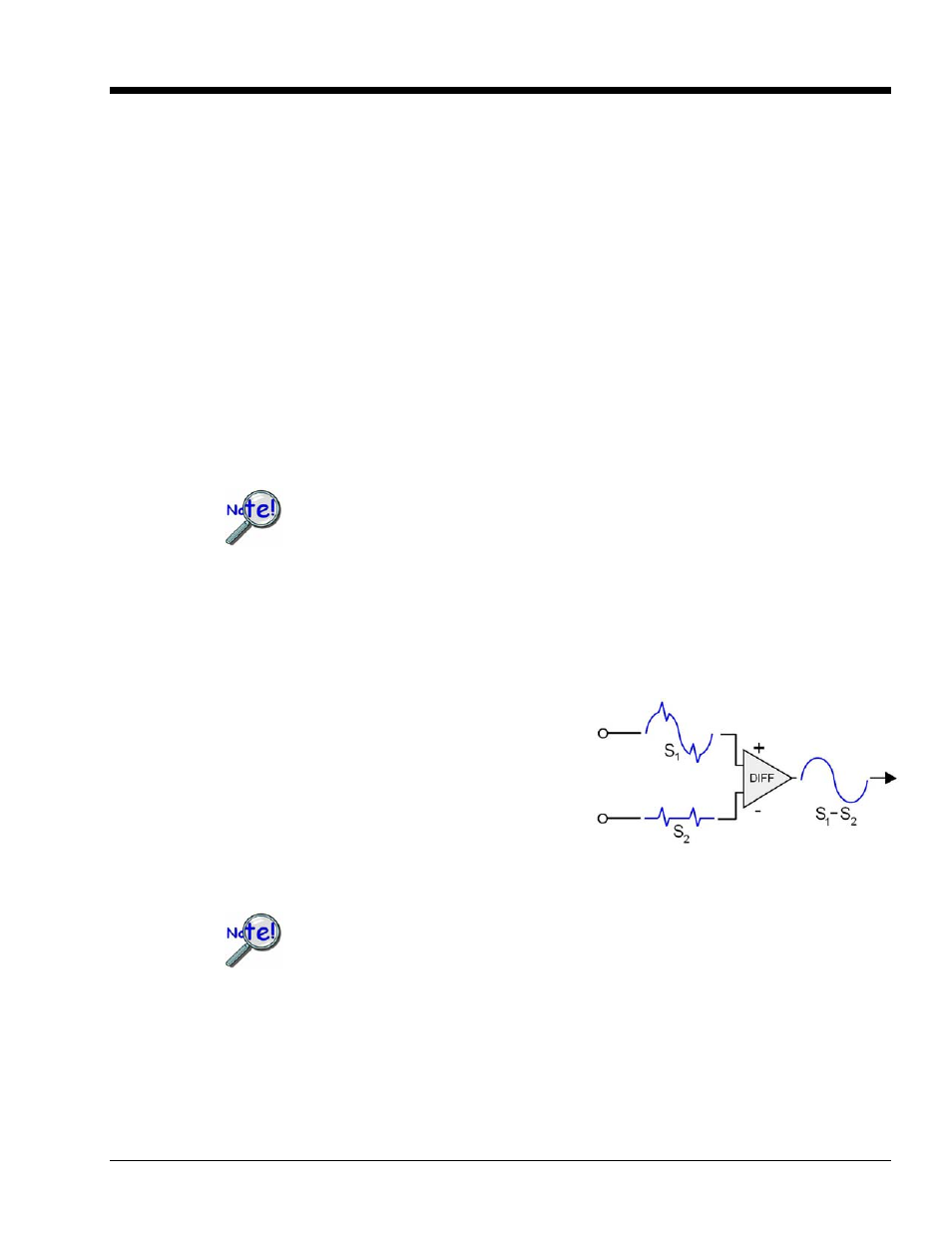Appendix a - signal modes and system noise, Signal modes, Appendix a – Measurement Computing Personal Daq/3000 Series User Manual
Page 79: Signal modes and system noise

Appendix A
Signal Modes and System Noise
Signal Modes …… A-1
Connecting Thermocouples to Screw-Terminal Blocks …… A-2
Shielding …… A-3
TC Common Mode …… A-3
Cold Junction Compensation Techniques …… A-4
System Noise …… A-5
Averaging …… A-5
Analog Filtering …… A-5
Input and Source Impedance …… A-5
Crosstalk …… A-5
Oversampling and Line Cycle Rejection …… A-6
Signal Modes
Personal Daq/3000 units can make use of single-ended mode, or differential modes. Mode selection is
made in software.
Single-ended mode refers to a mode, or circuit set-up, in which a voltage is measured between 1 signal
line and common ground voltage (Analog Common, or A
COM
). The measured voltage may be shared with
other channels. The advantage of a single-ended non-differential mode [over differential mode] is that it
provides for a higher channel count, for example: 16 channels instead of 8.
In Personal Daq/3000 applications, thermocouples should never be connected
single-ended. Doing so can result in noise and false readings.
Differential mode refers to a mode, or circuit set-up, in which a voltage is measured between two signal
lines. The measured differential voltage is used for a single channel. An advantage of using differential
inputs is that they reduce signal errors and the induction of noise resulting from ground current. The
following illustration is an example of how noise is reduced, or canceled-out, when using the differential
mode.
In the schematic, voltage signal S
2
is subtracted from signal S
1
, resulting in the output signal shown.
Noise spikes with the same polarity, phase, and magnitude in each input signal cancel out—resulting in a
clean differential signal (S
1
- S
2
).
In the schematic, signals S
1
and S
2
are shown in-phase;
however, even if these signals were out of phase, the
noise in each (indicated by jagged lines) would still
have the same magnitude, phase, and polarity. For that
reason, they would still cancel out.
Noise Reduction in Differential Mode
Differential signal hookups do not provide isolation or any kind of circuit
protection.
Resolution: An analog-to-digital converter (ADC) converts an analog voltage to a digital number. The
digital number represents the input voltage in discrete steps with finite resolution. ADC resolution is
determined by the number of bits that represent the digital number. An n-bit ADC has a resolution of 1
part in 2
n
. Thus, 12 and 16 bit resolutions are as follows:
•
12-bit resolution: 1 part in 4096 (2
12
), corresponding to 2.44 mV in a 10 V range.
•
16-bit resolution: 1 part in 65,536 (2
16
), corresponding to 0.153 mV in a 10 V range.
Appendix A
937492
Signal Modes and System Noise A-1
